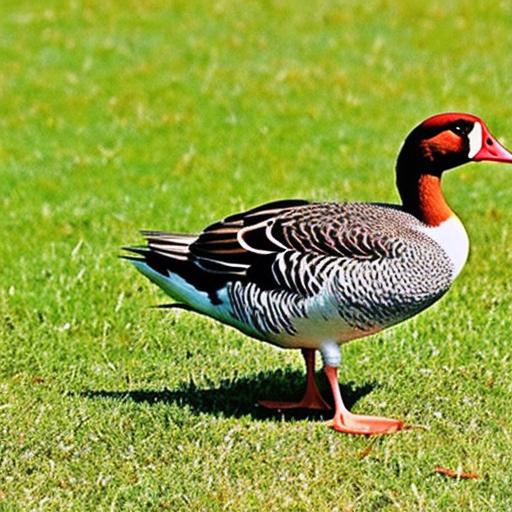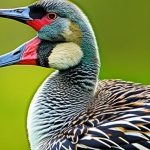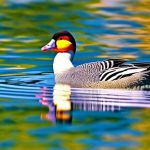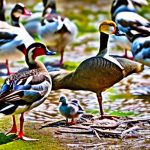Geese are known for their strong migratory instincts and their tendency to form strong social bonds within their flocks. They are highly adaptable birds and can thrive in a variety of environments, including urban areas, parks, and golf courses. Geese are herbivores and are attracted to areas with abundant grass and water sources. They are also known to be territorial and will aggressively defend their nesting sites and young goslings. Understanding these behavioral traits is crucial when developing a strategy to deter geese from unwanted areas.
Geese are also highly intelligent birds and can quickly adapt to changes in their environment. They have excellent memory and can remember locations where they have found food or nesting sites in the past. This means that once geese have established a presence in a particular area, they are likely to return to that location year after year. Additionally, geese are highly vocal birds and use honking as a form of communication within their flock. This behavior can be disruptive in public spaces and can contribute to the overall nuisance of having geese in unwanted areas. Understanding these behavioral patterns is essential when developing a comprehensive plan to deter geese effectively.
Key Takeaways
- Geese are social animals and exhibit protective behavior, especially during nesting season.
- Physical barriers such as fences and netting can effectively deter geese from entering certain areas.
- Sound deterrents like ultrasonic devices and visual deterrents like predator decoys can help keep geese away.
- Unkempt landscapes with tall grass and shrubbery can create an unappealing environment for geese.
- Natural repellents like grape seed extract and garlic can be used to discourage geese from frequenting an area.
- Professional assistance from wildlife management experts can provide effective and humane solutions for deterring geese.
- It is important to understand and comply with local laws and regulations when implementing geese deterrent methods.
Implementing physical barriers to deter geese
One effective method of deterring geese from unwanted areas is by implementing physical barriers. This can include the installation of fences, netting, or other structures that prevent geese from accessing certain locations. Fences can be particularly effective in preventing geese from entering specific areas such as golf courses, parks, or private properties. Netting can also be used to cover bodies of water, preventing geese from accessing these areas for feeding or nesting.
Another physical barrier that can be effective in deterring geese is the use of landscaping features such as hedges or shrubs. These natural barriers can create obstacles for geese and discourage them from entering certain areas. Additionally, the use of raised planting beds or elevated landscaping features can make it difficult for geese to access grassy areas, which are a primary food source for these birds.
It’s important to note that physical barriers should be carefully designed and installed to ensure they are effective and do not cause harm to the geese or other wildlife. Additionally, regular maintenance and monitoring of these barriers are essential to ensure their continued effectiveness in deterring geese from unwanted areas.
Using sound and visual deterrents
In addition to physical barriers, sound and visual deterrents can also be effective in deterring geese from unwanted areas. One common method is the use of predator decoys such as fake coyotes or dogs. These decoys can create the illusion of a potential threat to the geese, causing them to avoid the area. It’s important to regularly move these decoys around to prevent geese from becoming accustomed to their presence.
Another effective sound deterrent is the use of sonic devices that emit loud noises or distress calls of geese predators. These devices can startle the geese and discourage them from staying in the area. Visual deterrents such as reflective tape or balloons can also be effective in deterring geese by creating a sense of unease and making the area less appealing for nesting or feeding.
It’s important to note that while sound and visual deterrents can be effective in the short term, geese may become accustomed to these methods over time. Therefore, it’s essential to regularly change the location and type of deterrents to maintain their effectiveness.
Creating an unappealing environment for geese
Creating an unappealing environment for geese is another effective strategy for deterring them from unwanted areas. One method is to modify the landscape by reducing the availability of food sources such as grass and water. This can be achieved by implementing landscaping practices that discourage the growth of lush grasses and by reducing water features such as ponds or lakes.
Additionally, the use of repellent plants such as holly, juniper, or spirea can make an area less attractive to geese. These plants have foliage that is unappealing to geese and can help deter them from feeding or nesting in specific locations. Another method is to regularly mow grassy areas to keep them short, making it less appealing for geese to feed.
It’s important to note that creating an unappealing environment for geese should be done in a way that does not harm other wildlife or disrupt the natural ecosystem of the area. Careful planning and consideration of the impact on other species are essential when implementing this strategy.
Utilizing natural repellents
In addition to modifying the landscape, utilizing natural repellents can also be an effective method for deterring geese from unwanted areas. One common natural repellent is the use of grape seed extract, which can be sprayed on grassy areas to make them less appealing to geese. This natural repellent is safe for the environment and other wildlife while effectively discouraging geese from feeding in specific locations.
Another natural repellent is the use of garlic or chili pepper-based sprays, which can be applied to grassy areas to deter geese from feeding. These natural repellents create an unpleasant taste for geese and can discourage them from staying in the area.
It’s important to note that natural repellents should be used in accordance with local regulations and environmental guidelines to ensure they do not cause harm to other wildlife or the surrounding ecosystem. Additionally, regular reapplication of natural repellents may be necessary to maintain their effectiveness.
Seeking professional assistance
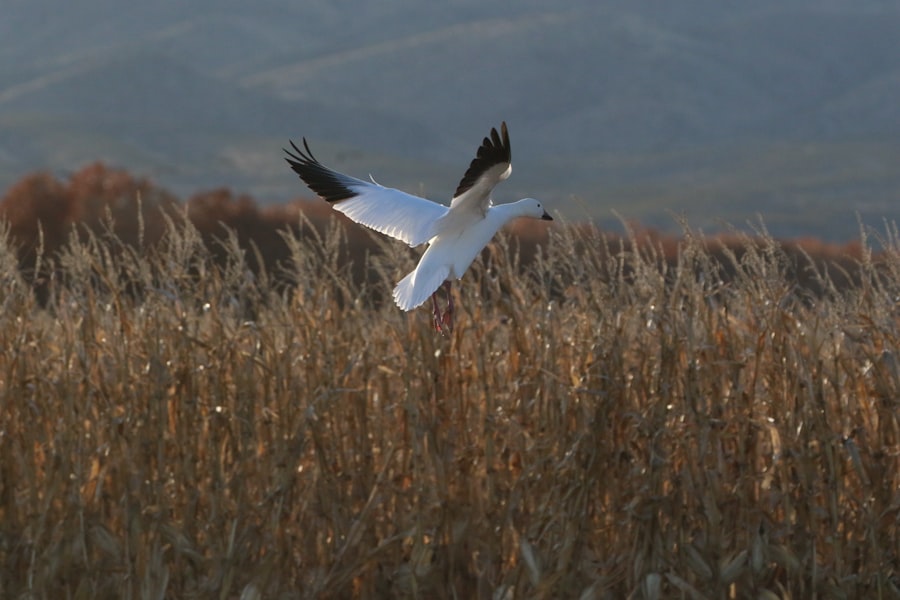
In some cases, deterring geese from unwanted areas may require professional assistance from wildlife management experts or pest control professionals. These professionals have the knowledge and experience to develop comprehensive strategies for deterring geese while ensuring the safety of other wildlife and the surrounding environment.
Professional assistance may involve the use of advanced deterrent methods such as laser technology or remote-controlled devices that can effectively deter geese from specific areas. Additionally, wildlife management experts can provide valuable insights into the behavior of geese and develop customized solutions tailored to the specific needs of each location.
It’s important to work with reputable professionals who have experience in wildlife management and adhere to ethical and environmentally friendly practices when deterring geese from unwanted areas.
Understanding the legal aspects of deterring geese
When implementing strategies to deter geese from unwanted areas, it’s essential to understand the legal aspects and regulations governing wildlife management. In many regions, geese are protected under wildlife conservation laws, and it’s important to adhere to these regulations when developing deterrent methods.
Before implementing any deterrent strategies, it’s crucial to research and understand local wildlife management regulations and obtain any necessary permits or approvals required for deterring geese. Working with local wildlife authorities or conservation organizations can provide valuable guidance on legal requirements and best practices for deterring geese while ensuring compliance with wildlife protection laws.
Additionally, it’s important to consider ethical considerations when deterring geese from unwanted areas. It’s essential to prioritize non-lethal methods and avoid causing harm to geese or other wildlife during the deterrent process. By understanding the legal aspects and ethical considerations of deterring geese, it’s possible to develop effective strategies that are both compliant with regulations and environmentally responsible.
In conclusion, understanding the behavior of geese is crucial when developing effective strategies for deterring them from unwanted areas. Implementing physical barriers, sound and visual deterrents, creating an unappealing environment, utilizing natural repellents, seeking professional assistance, and understanding the legal aspects are all important components of a comprehensive approach to deterring geese while ensuring the safety of other wildlife and the surrounding environment. By carefully considering these factors and developing a tailored plan, it’s possible to effectively deter geese from unwanted areas while maintaining a harmonious coexistence with wildlife.
Looking to keep geese off your lawn? Check out this informative article on where to put a chicken coop for some helpful tips on creating a designated space for your poultry. Properly positioning your chicken coop can not only benefit your chickens but also help in deterring geese from invading your lawn. Understanding the best location for your coop can contribute to a more organized and efficient setup, ultimately aiding in keeping unwanted geese at bay.
Meet Walter, the feathered-friend fanatic of Florida! Nestled in the sunshine state, Walter struts through life with his feathered companions, clucking his way to happiness. With a coop that’s fancier than a five-star hotel, he’s the Don Juan of the chicken world. When he’s not teaching his hens to do the cha-cha, you’ll find him in a heated debate with his prized rooster, Sir Clucks-a-Lot. Walter’s poultry passion is no yolk; he’s the sunny-side-up guy you never knew you needed in your flock of friends!

